Session 1: EEG as a Control Signal
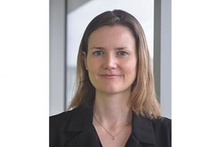
Rainbo Hultman, PhD
The University of Iowa
Primary difficulty in developing therapeutics for brain disorders is that the underlying etiological mechanisms are not well understood. We have made recent breakthroughs in our understanding of the relationship between electrical activity in the brain and behavior, which is promising for shedding light on these mechanisms. My lab studies networks of electrical activity in the brain using pre-clinical rodent models of disease and is working to identify the cellular and molecular factors that contribute to the organization of such networks. Our overarching goal is to promote the development of precision medicine (i.e. therapeutics targeted to specific individuals) by identifying therapeutic targets that promote healthy brain electrical network activity. Two brain disorders of primary focus in the lab include migraine and major depressive disorder (MDD). By probing the underlying electrical networks of these disorders and identifying molecular drivers of such activity, we will be better positioned to develop more effective treatments for these debilitating disorders

Soura Dasgupta, PhD
The University of Iowa

James Cavanagh, PhD
The University of New Mexico

Jan Wessel, PhD
The University of Iowa
Our research examines the neural mechanisms that underlie flexible behavior and cognition. We are interested in how humans carry out and maintain goal-directed behaviors; specifically, how the cognitive system resolves challenges to this goal. Common examples of such challenges are unexpected events and action errors. We investigate the dynamic interplay between brain networks that subserve: - The monitoring of the external and internal environment. - The evaluation of action outcomes. - The adaptation of ongoing behavior and cognition in the short and long term. We use a variety of methods to study these questions, including (but not limited to): - Scalp-recorded Electroencephalography (EEG). - Invasive recordings of brain activity (ECoG and DBS-LFP recordings). - Transcranial magnetic stimulation (TMS). - Functional Magnetic Resonance Imaging (fMRI). - Computational modeling. - Autonomic psychophysiology. Finally, we study how pathological processes, brain lesions, and (ab)normal aging affect these networks.
Session 2: Modulating Speech and Language
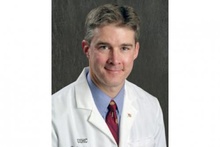
Matt Howard, MD
The University of Iowa
Matthew A. Howard, III joined the Department of Neurosurgery in 1993, following his residency and neurosurgical training at the University of Washington, Seattle, and was appointed as the Head of the Department of Neurosurgery at the University of Iowa in July, 2001. Doctor Howard holds a joint appointment with the Department of Neurology and specializes in epilepsy surgery. His research interests include studies of hearing impairment, clinical research in epilepsy treatments, clinical models of Alzheimer's disease, magnetic stereotaxis for the treatment of focal neurological disorders, and investigations of the mechanical properties of brain tissue. He is the principal investigator of an NIH-funded research group studying the functional organization of human auditory cortex.

Kris Tjaden, PhD
University at Buffalo
Kris Tjaden, Ph.D., CCC-SLP is a Professor in the Department of Communicative Disorders and Sciences at the University at Buffalo and Director of the Motor Speech Disorders Laboratory. She is a is a Fellow of the American Speech-Language and Hearing Association (ASHA) and former chair for ASHA’s Research and Scientific Affairs Committee. Dr. Tjaden also served for five years as a standing member of the Motor Function and Speech Rehabilitation (MFSR) study section. Her NIH-funded research focuses on the acoustic and perceptual consequences of dysarthria in adults with neurodegenerative disease, including Parkinson’s disease and Multiple Sclerosis.

Phil Gander, PhD
The University of Iowa
I am fascinated by how the brain converts sound into meaning, and how this is critically dependent on a person’s current state and history. My research focus is in the area of auditory cognition – understanding how the brain makes sense of sound – from the perspective of cognitive neuroscience. Using psychophysics and neuroimaging (EEG, ECoG, fMRI) I study how the auditory system forms perceptual representations and the factors that contribute to their formation, including learning, memory, and attention, under normal conditions and also when they are disordered (e.g., hearing loss, cochlear implants, and tinnitus). The study of tinnitus – ringing in the ears – provides a unique opportunity to understand how we hear sound; by investigating the presence of a phantom auditory percept we can gain insight into how sound is coded in the brain. In addition to investigating the brain bases of sound processing I place a strong emphasis on translating basic scientific findings into benefit for patients. In the case of tinnitus, neuroscience will provide the knowledge that leads to an effective treatment for a condition that affects 10-15% of the adult population.
I am an assistant research scientist in the Department of Neurosurgery and the Department of Otolaryngology at The University of Iowa, in the Human Brain Research Laboratory of Matt Howard, MD, where we conduct research using electrocorticography (ECoG). I work closely with Tim Griffiths, MD Newcastle University. I previously worked as a research fellow at the National Biomedical Research Unit in Hearing, Nottingham, UK with Deb Hall. I received my PhD in Psychology, Neuroscience, and Behaviour in 2009 from McMaster University, Hamilton, ON, where I worked with Larry Roberts and Laurel Trainor.
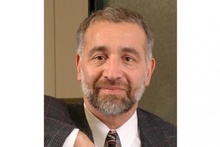
Daniel Corcos, PhD
Northwestern
Dr. Daniel Corcos is an internationally renowned expert on therapeutic interventions for Parkinson's disease including exercise, medication and deep brain stimulation. He has studied both the positive and negative effects of deep brain stimulation of the subthalamic nucleus (STN DBS). He has studied the positive effects of STN DBS on bradykinesia, tremor and rigidity as well as the negative effects on different types of eye movement as well as aspects of speech.
Session 3: Beyond DBS
Hiroto Kawasaki, MD, PhD
The University of Iowa
Neurophysiology of Emotion Processing in the Human Brain, Neurophysiology of Auditory Cortex, Information processing of the Brain, Surgical Treatment of Epilepsy
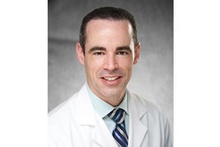
Brian Dlouhy, MD
The University of Iowa
Dr. Brian J. Dlouhy is a pediatric and adult neurosurgeon at the University of Iowa Hospitals & Clinics in Iowa City, Iowa. He completed his neurosurgery residency at the University of Iowa, enhanced his training with a fellowship in minimally invasive neurosurgery in Sydney, Australia, and completed a pediatric neurosurgery fellowship at Washington University and St. Louis Children's Hospital. He has published numerous studies on Chiari malformations, disorders of the craniovertebral junction (CVJ), and epilepsy surgical treatment strategies. He has been invited to give multiple talks at national and international meetings about these conditions. Because of this experience, Dr. Dlouhy has a unique skillset to treat infants, children, and adults with Chiari malformations, disorders of the CVJ, and epilepsy using minimally invasive techniques to allow for the best possible outcomes.

Jeremy Greenlee, MD
The University of Iowa
My research focuses on the cortical mechanisms subserving human language and vocalization. Major goals of the research are to understand the representation of self-vocalization stimuli in primary and associated auditory cortices, elucidate and characterize the cortico-cortical interactions between auditory cortex and other cortical regions, including speech generating areas, during self-vocalization, and to characterize frontal lobe cortical processing of audiovisual stimuli. These goals are accomplished using electrophysiological recording, including local field potentials and action potentials, in awake human patients undergoing invasive diagnostic and treatment of intractable epilepsy.

Harrison Walker, MD
The University of Alabama at Birmingham
Dr. Walker is an expert on deep brain stimulation (DBS) for movement disorders. DBS is more effective than medications and other conventional therapies for motor symptoms of Parkinson's disease, dystonia, and essential tremor. Emerging DBS technologies have substantial potential to improve a variety of patient outcomes. However these devices are increasingly adaptable and complex, and we lack robust tools to fully realize their therapeutic potential. Dr. Walker's lab investigates how deep brain stimulation works with electroencephalography, electrocorticography, single unit recordings, neuroimaging, and behavioral assessment in patients with movement disorders. Our goal is to obtain new knowledge about the therapeutic mechanism of DBS and apply these findings to guide technological innovation, both for established indications and for emerging indications in neurology and psychiatry. Currently his research is supported by grants from the NIH BRAIN Initiative and the Michael J. Fox Foundation.
Session 4: Boosting Cognition
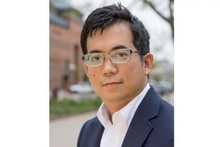
Kai Hwang, PhD
The University of Iowa
The Hwang lab conducts research to discover the neural, cognitive, and developmental dynamics of cognitive control. Specifically, we are interested in the neural architecture and dynamic processes that allow brain networks to select, inhibit, transfer, and integrate information for goal-directed behaviors. Together, these mechanisms support many important mental functions during typical and atypical development, such as attention, working memory, response selection and inhibition. We address our research questions with a comprehensive human neuroscience approach, combining multimodal research methodologies, including fMRI, EEG, TMS, lesion studies, eye tracking and behavioral testing.
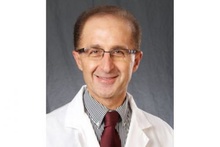
Ergun UC, MD
The University of Iowa
Dr. Uc is involved in all aspects of the care of Parkinson’s disease (PD) patients including deep brain stimulation (DBS), as well dystonia (botulinum toxin injections, DBS), essential tremor (DBS), Huntington’s disease, and other movement disorders. His research focuses primarily on Parkinson’s disease and he has received research support as a principal investigator from the National Institutes of Health (Prediction of Driver Safety in Parkinson’s disease-R01), Department of Veterans Affairs (Driver Rehabilitation in PD, Effects of Aerobic Exercise in PD-both Merit Review awards), as well as American Parkinson Disease Association and Parkinson’s Disease Foundation. He also has conducted research on driving in Huntington’s disease. As a member of the Parkinson Study Group and Huntington Study Group, he has participated in multicenter clinical trials on experimental drugs.

Kathleen Poston, MD
Stanford University
Dr. Kathleen Poston is Associate Professor of Neurology & Neurological Sciences and (by courtesy) Neurosurgery at Stanford University. She received her Bachelor's of Science in Bioengineering at the University of Pennsylvania, her Master's Degree in Biomedical Engineering and her MD at Vanderbilt University. She completed her Neurology residency training at UCSF, completed a fellowship in clinical Movement Disorders at Columbia University and post-doctoral research training in Functional Neuroimaging at the Feinstein Institute.
Dr. Poston’s research and clinical emphasis is to understand the motor and non-motor impairments that develop in patients with alpha-synuclein pathology, such as Parkinson’s disease, Lewy body dementia, and Multiple System Atrophy. Her lab uses functional and structural imaging biomarkers, along with biological biomarkers, to understand the underlying pathophysiology associated these symptoms. She holds joint appointments in Movement Disorders and Memory Disorders and is a founding member of the Stanford Alzheimer’s Disease Research Center, she leads the Clinical Core for the Pacific Udall Center, which is an NIH-funded Parkinson’s disease Research Center of Excellence.
Session 5: TMS

Krystal Parker, PhD
The University of Iowa
My long-term goal is to understand the cerebellar contribution to cognitive and affective processes. In pursuit of this goal, I combine neurophysiology, pharmacology and optogenetics in animals performing behavioral tasks to dissect cerebellar neural circuitry. I study the potential for cerebellar stimulation to rescue cognitive impairments and mood in humans using EEG but also in animals with pharmacologically- and genetically-induced phenotypes of disease. My training in psychology, systems neurophysiology, and clinical psychiatry allows me to target the cerebellum for novel treatments of diseases involving cognitive and affective dysfunction.

Hiroyuki Oya, MD
The University of Iowa
Electrophysiology; Behavioral study of learning and memory; Plasticity of human brain functions

Stacey DeJong, PT, PhD, PCS
The University of Iowa

Aaron Boes, MD, PhD
The University of Iowa
Our laboratory is interested in the link between brain structure and function across the lifespan, particularly network-based localization of neurological and psychiatric symptoms. We approach this topic using multi-modal neuroimaging methods that include lesion mapping, resting state functional connectivity MRI, and structural MRI. A recent focus of the lab has been to investigate the networks associated with focal brain lesions by integrating the traditional approach to lesion mapping with normative functional connectivity data, termed lesion network mapping. Dr. Boes is the Director of the Clinical Program in Noninvasive Brain Stimulation at the University of Iowa and another focus of the lab is to use advanced imaging techniques in conjunction with neuromodulation to better understand the therapeutic mechanisms of brain stimulation, such as transcranial magnetic stimulation for the treatment of depression.
Session 6: Modulating Frontal Circuits
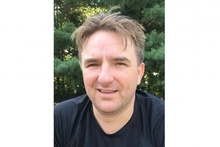
John Wittig, PhD
NIH
John earned his bachelor’s degree in computer engineering and biochemistry and a master’s degree in electrical engineering from the University of California in San Diego. He completed his doctoral work in bioengineering at the University of Pennsylvania, and completed a subsequent postdoctoral fellowship with Dr. Barry Richmond in the Laboratory of Neuropsychology in NIMH. He is currently a staff scientist in Dr. Kareem Zaghloul's Laboratory in the National Institutes of Neurological Disorders and Stroke, where he leads the team's efforts in collecting high quality intracranial recordings from epilepsy patients during behavioral testing and direct electrical stimulation. His research aims to characterize the neurophysiological mechanisms of memory encoding, and the use of neural feedback and electrical stimulation to affect those mechanisms.
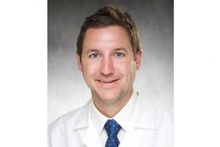
Nicholas Trapp, MD
The University of Iowa
Dr. Trapp has an ongoing project that uses functional connectivity MRI to identify stimulation targets for a trial using repetitive TMS to treat traumatic brain injury-induced depression.
Nicole Bentley, MD
The University of Alabama at Birmingham
Kareem Zaghloul, MD, PhD
NIH
Dr. Zaghloul received his B.Sc. degree from MIT in 1995 and his M.D. and Ph.D. degrees from the University of Pennsylvania in 2003. His graduate work focused on developing silicon models of visual processing in the mammalian retina with Dr. Kwabena Boahen. Dr. Zaghloul completed a residency in Neurological Surgery in 2010 from the University of Pennsylvania. During this time, he completed postdoctoral research with Dr. Michael Kahana, investigating the neural correlates of human memory encoding, decision, and reward. Dr. Zaghloul has completed clinical fellowships in Epilepsy Surgery and in DBS Surgery. Dr. Zaghloul joined NINDS as a Staff Clinician in 2010, and as an Investigator in 2013. His laboratory is focused on investigating the neural mechanisms underlying human cognitive function.
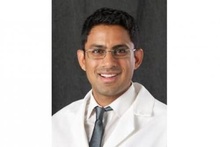
Kumar Narayanan, MD, PhD
The University of Iowa
The specific problem we are interested is cognitive dysfunction in Parkinsons disease. Our current research focuses on the influence of dopamine on prefrontal networks controlling cognitive behaviors such as timing and performance monitoring. We combine ensemble recording from populations of neurons in awake, behaving animals with specific manipulations using techniques such as optogenetic stimulation, targeted pharmacology, or selective genetic disruption with RNA interference. We hope to identify new treatment strategies that can be translated to a clinical setting.
